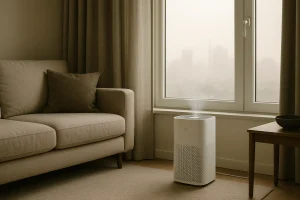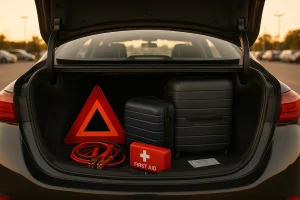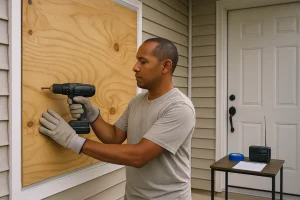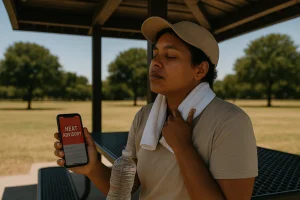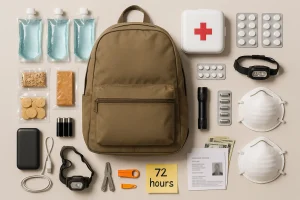Heat Advisory: Signs of Heat Illness & What to Do Now
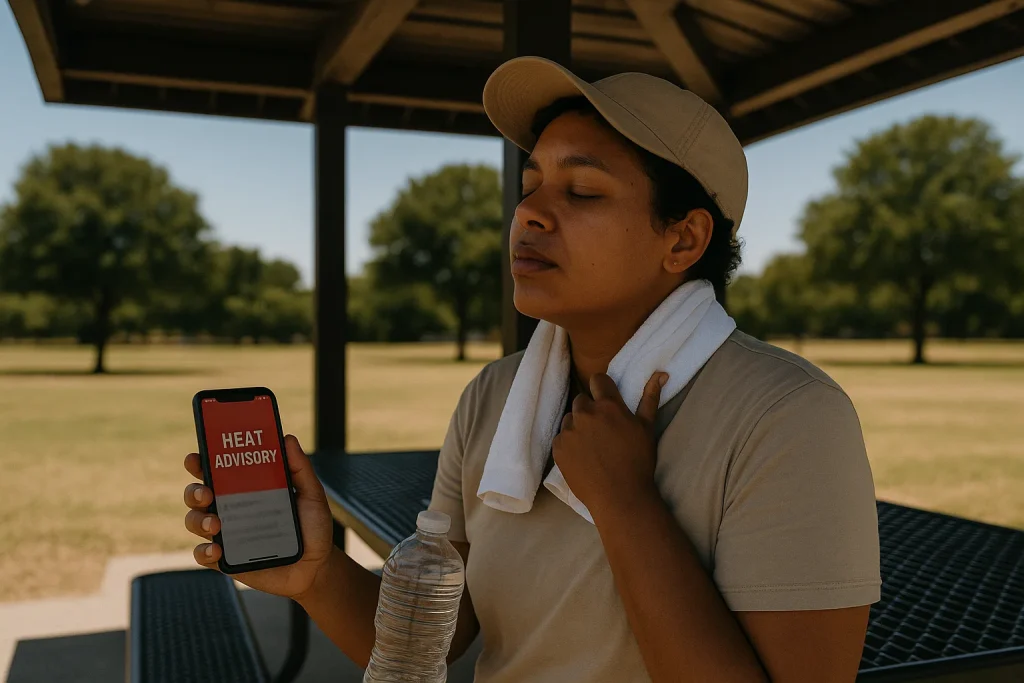
Shade, water, and rest help prevent heat illness.
Updated: August 20, 2025
Quick Steps: During a Heat Advisory, move activity indoors or to cooler hours; drink water often; take shade/AC breaks; wear light clothing; watch for heat exhaustion (heavy sweat, dizziness, nausea). If anyone has confusion, fainting, very hot skin or stops sweating, cool first and call 911.
Educational only—this isn’t medical or legal advice. Follow local health alerts and employer/school policies. Call 911 for emergencies.
Why this matters now
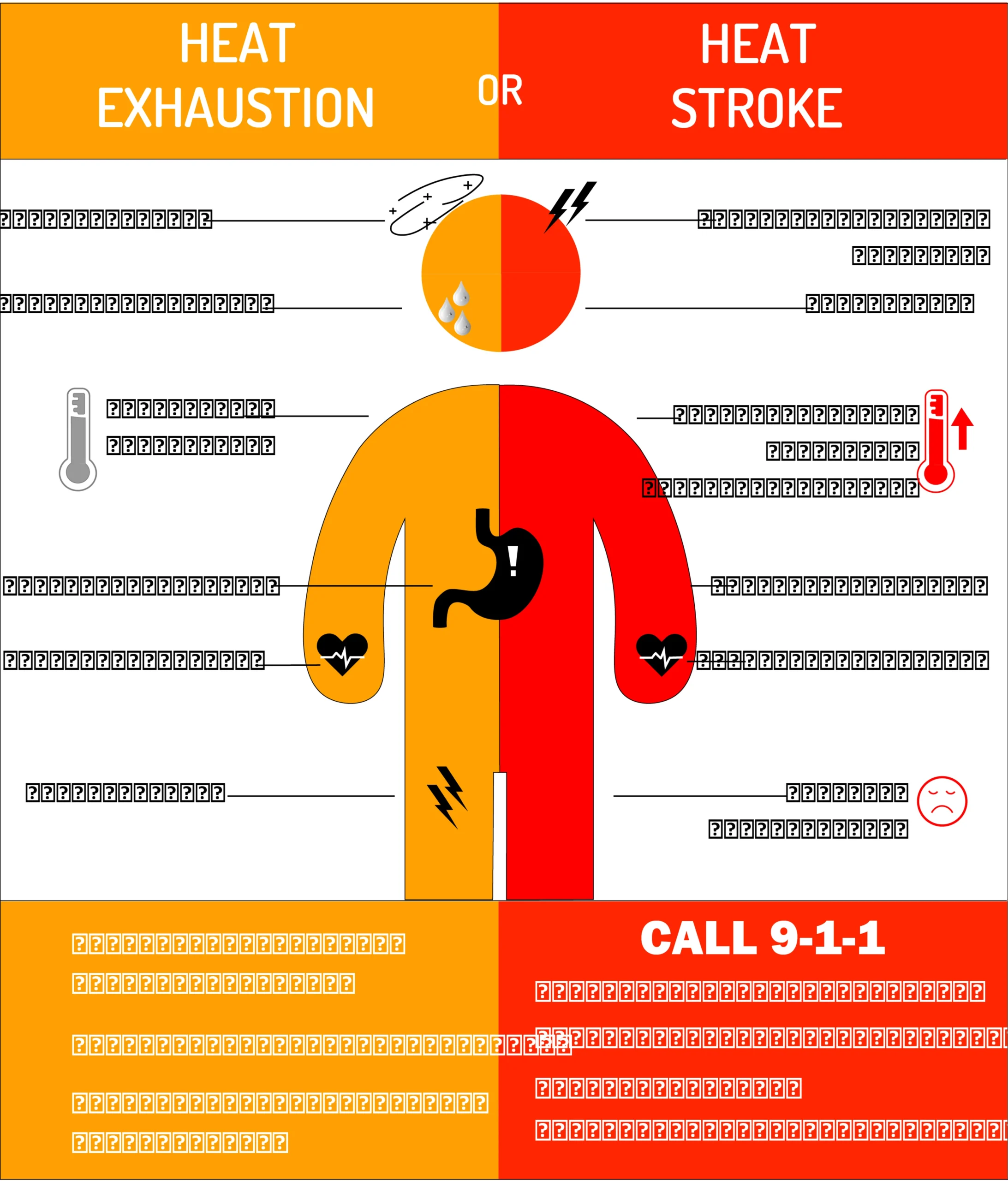
Heat waves are hitting earlier, lasting longer, and affecting more places. A Heat Advisory means conditions are hot enough to cause illness for many people, not just athletes or outdoor workers. This guide gives you fast, plain-English steps for staying safe today: what the advisory means, signs of heat illness, and exactly what to do.
What “Heat Advisory” means (in simple terms)
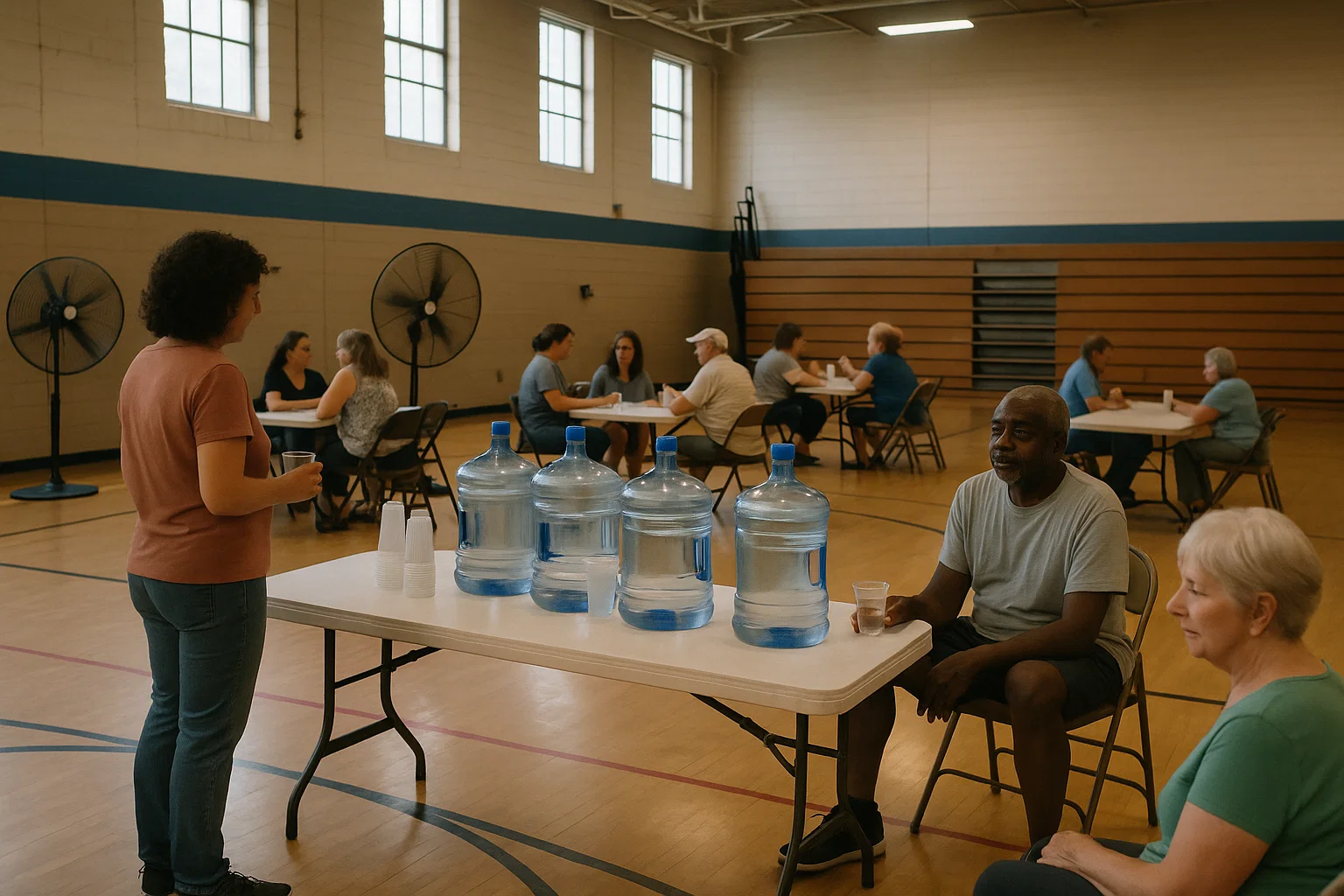
When the National Weather Service posts a Heat Advisory, it’s a “take action” alert for dangerous heat—often when the heat index (how hot it feels with humidity) approaches or exceeds common local thresholds. You don’t need triple-digit temperatures to be at risk; humidity makes heat harder to shed. Avoid the hottest hours, prioritize shade/AC, shorten outdoor time, and check on vulnerable people.
Set phone alerts. Plan chores and workouts during the coolest hours (early morning or late evening).
A heat advisory is an official alert issued by government meteorological agencies, like the National Weather Service in the US, to warn the public of impending weather conditions that pose a significant health risk due to intense heat. It is not issued for just any hot day; specific criteria involving both high temperatures and humidity levels must be met or forecasted. These thresholds vary by region, as populations accustomed to milder climates are more vulnerable.
The advisory serves as an early warning system, urging people to take proactive steps to stay cool and hydrated before dangerous conditions set in. Its primary goal is to prevent heat-related illnesses and reduce the strain on emergency services. When an advisory is in effect, it is strongly recommended to reschedule strenuous outdoor activities to the coolest parts of the day, typically early morning or evening. Individuals should drink plenty of water, wear light clothing, and spend time in air-conditioned spaces. Special attention must be paid to high-risk groups, including the elderly, young children, and those with chronic illnesses, as they are the first to suffer adverse effects.
Know the signs: heat cramps, heat exhaustion, heat stroke
Heat illness exists on a spectrum. Learn these common signs so you can act quickly:
| Condition | Common Signs | What to Do |
|---|---|---|
| Heat cramps | Muscle cramps/spasms during or after activity; heavy sweating. | Stop activity; move to a cool area; sip water or an electrolyte drink; gently stretch the cramped muscle. If cramps persist >1 hour, seek medical advice. |
| Heat exhaustion | Heavy sweating, weakness, dizziness, headache, nausea, irritability, thirst, elevated body temp, decreased urination. | Stop, cool down (shade/AC, cool wet cloths/ice packs to neck/armpits/groin), sip fluids, loosen clothing. If symptoms worsen or last >1 hour, seek care. |
| Heat stroke (emergency) | Confusion, fainting, seizure, very hot skin (may be dry or still sweaty), rapid pulse; temp can be ≥103°F (39.4°C). | Call 911. Begin rapid cooling immediately (cold water immersion if available; else cool wet cloths/ice packs; fan air over damp skin). Do not delay for transport. |
What to do now (step-by-step)
- Check today’s heat index and hourly trend on your weather app or your local weather office page.
- Reschedule or shorten outdoor tasks to the coolest hours. Use shade and AC breaks.
- Hydrate on a schedule (example: drink every 15–20 minutes during activity). Include electrolytes if sweating heavily.
- Dress in light, loose clothing; light colors; breathable fabrics; wide-brim hat; sunscreen.
- Use the buddy system for work and sports. Check each other for early signs.
- Cool first, transport second if severe symptoms start. Call 911.
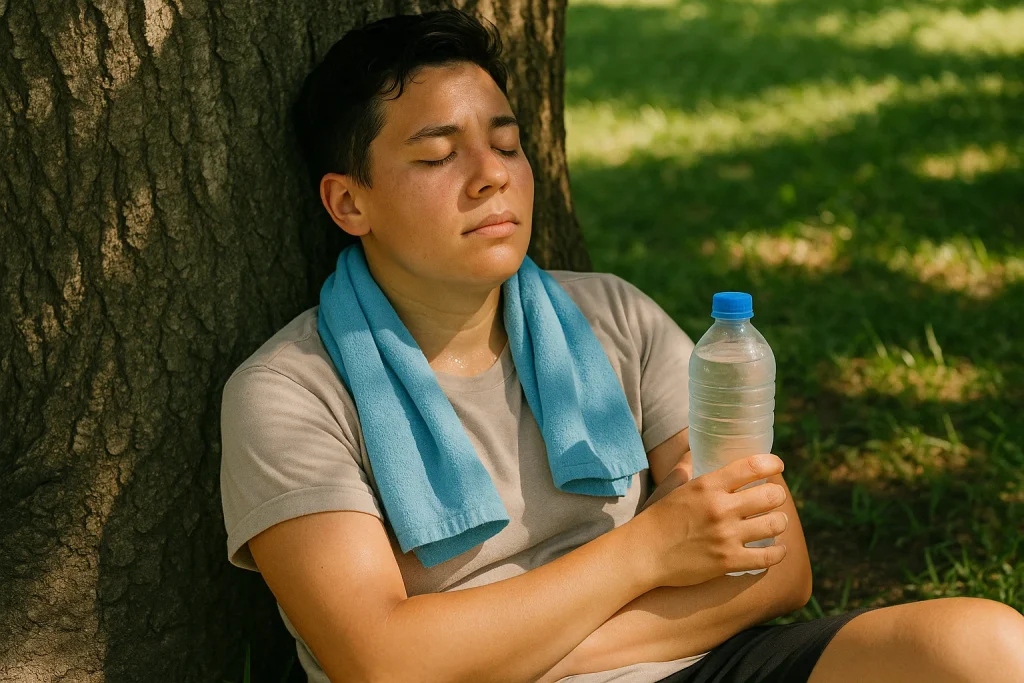
Hydration that actually helps
- Drink early and often. Thirst lags behind need in the heat.
- Use electrolytes if sweating for more than 60 minutes or if sweat is very salty (white marks on clothing/skin).
- Avoid over-hydration. Don’t force massive volumes of plain water in a short time—add electrolytes and listen to your body.
- Make it visible. Carry a bottle; set phone reminders; have water accessible at workstations.
Cooling tactics that work fast
- AC > fan in very hot rooms. Fans move air but can be ineffective when the room itself is very hot. AC or evaporative cooling is better when available.
- Cold water immersion cools fastest in emergencies (large tub, kiddie pool, or shower). If not available, use cold wet cloths/ice packs at the neck, armpits, and groin.
- Shade + mist + airflow lowers skin temp quickly—use spray bottles, cool towels, and a fan blowing across damp skin.
At-risk groups: change the plan for them
- Kids/teens: schedule indoor play; more breaks; educate coaches on signs; keep cold water ready.
- Older adults: check twice a day; set up a cooled room; simplify routines; confirm medications/medical needs.
- Pregnancy: reduce exposure; choose AC environments; hydrate steadily.
- Chronic conditions (asthma, heart disease, diabetes): stick to care plans; check in with a clinician about heat-sensitive medications.
- Outdoor workers/athletes: acclimatize gradually; build in rest breaks; rotate strenuous tasks; prioritize shade/AC recovery.
Work & sports: a safe practice plan
For teams and crews, set a written plan:
- Acclimatization: ramp up workload and intensity over 7–14 days.
- Breaks: schedule shaded/AC breaks by the clock, not by how people “feel.”
- Buddy system: partners watch for signs of heat illness.
- Cooling gear: cold towels, ice, shade, mist bottles. Keep a tub or shower access for emergencies when possible.
- Cancel or move times when the hourly forecast crosses your team’s risk threshold.
Home & car: small changes, big difference
- Never leave kids, adults, or pets in cars. Temperatures can spike dangerously within minutes.
- Create a cool room: choose a room with AC or a portable unit; keep doors closed; use blackout curtains; run fans to circulate cool air.
- Sleep cooler: cool shower, light bedding, low fan across a bowl of ice, and pre-cool the room.
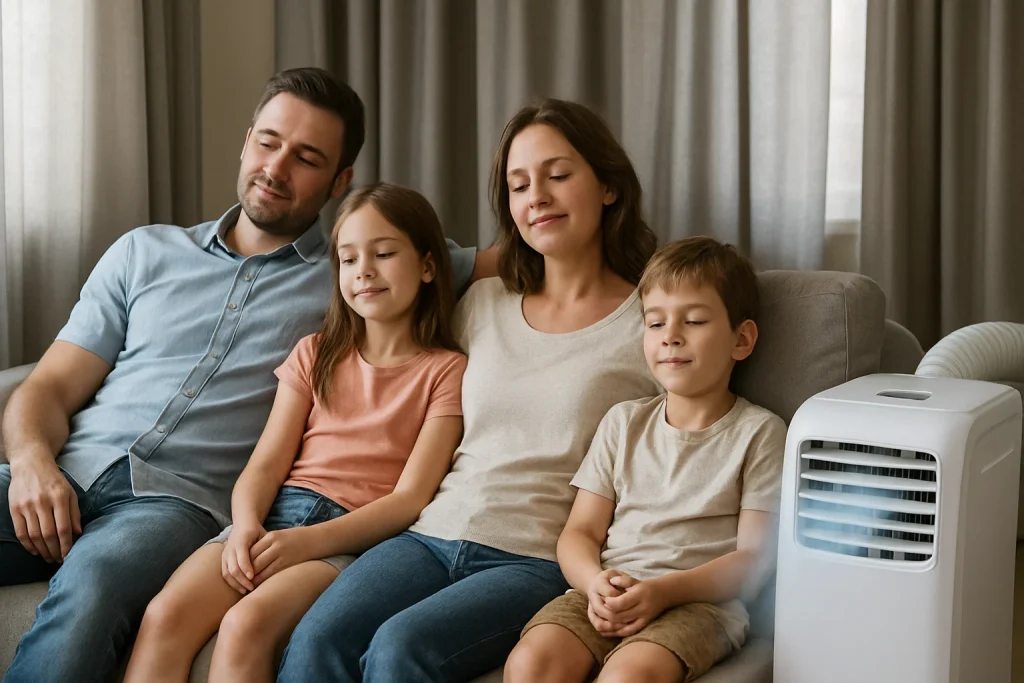
Signs and Effect of Heat Your Body
Signs of Heat Illness
Heat illness is a spectrum of conditions that occur when the body cannot properly cool itself, ranging from mild to life-threatening. Recognizing the early signs is critical for prompt intervention and preventing a medical emergency. The initial symptoms often include heavy sweating, a key mechanism the body uses to cool down, accompanied by intense thirst and muscle cramps, particularly in the legs or abdomen. As the condition progresses, the individual may appear pale, cool, and clammy to the touch, even in the heat. Dizziness, lightheadedness, headache, and general weakness or fatigue are common signs that the body is under significant stress.
Nausea or vomiting can also occur, which complicates the ability to rehydrate. In more severe cases, confusion, irritability, or fainting (syncope) are major red flags indicating a progression toward heat stroke. It is vital to understand that these signs represent a continuum, and any of them should be taken seriously as a signal to immediately stop activity, cool down, and hydrate.
Heat Exhaustion
Heat exhaustion is a serious heat-related illness that results from excessive loss of water and salt, usually through profuse sweating during physical exertion in a hot environment. It is the body’s response to an overwhelming strain on its cooling systems. Key symptoms include heavy sweating; cold, pale, and clammy skin; a fast but weak pulse; nausea or vomiting; muscle cramps; tiredness or weakness; dizziness; and headache. Fainting may also occur. Unlike heat stroke, the body temperature may be elevated but is typically below 104°F (40°C), and mental status is generally intact, though the person may feel faint or confused.
Immediate action is required to prevent progression to heat stroke. The person must be moved to a cool, preferably air-conditioned, place immediately. They should lie down, loosen clothing, and apply cool, wet cloths to their body or take a cool bath. Sipping cool water is crucial. If symptoms worsen, last longer than one hour, or include vomiting, seeking medical attention is urgent.
Heat Stroke
Heat stroke is a severe medical emergency and the most serious form of heat illness. It occurs when the body’s temperature regulation system fails completely, causing core body temperature to rise rapidly to 104°F (40°C) or higher. This is a life-threatening condition that can cause permanent disability or death if emergency treatment is not provided immediately. The hallmark sign is a change in mental status, which can present as confusion, agitation, slurred speech, irritability, delirium, seizures, or coma. Crucially, and unlike heat exhaustion, the skin is often red, hot, and dry to the touch because the body has stopped sweating. However, in athletes exerting themselves in the heat, sweating may still be present.
Other signs include a throbbing headache, a very rapid and strong pulse, and potential loss of consciousness. If you suspect heat stroke, you must call emergency services (911) immediately. While waiting for help, move the person to a cooler environment and initiate rapid cooling by any means possible, such as applying ice packs to the armpits, groin, and neck, immersing them in a cool bath, or misting them with water while fanning air over them.
Checklist: Heat Advisory day plan
- Check the hourly heat index and alerts.
- Move outdoor work and workouts to cooler hours; shorten sessions.
- Set reminders to drink water; prepare an electrolyte option.
- Wear light clothing and a wide-brim hat; use sunscreen.
- Plan shade/AC breaks; set up a cool room at home.
- Pre-stage cooling: cold towels, ice packs, spray bottle.
- Use the buddy system at work, practices, and events.
- Know the signs of heat exhaustion vs. heat stroke.
- Keep emergency numbers handy; teach “cool first, then transport.”
FAQs
How much should I drink during a Heat Advisory?
Drink regularly, especially if active—small, frequent sips often work best. Add electrolytes during long or very sweaty activity. Avoid energy drinks and limit alcohol.
Do fans help?
Fans help with sweat evaporation, but in very hot rooms AC is better. Combine a fan with cool mist or a damp cloth to boost cooling.
Should I take a cold shower if I feel overheated?
Yes—cool or cold showers are effective. In severe symptoms, use cold water immersion and call 911.
Is heat stroke possible even if I’m still sweating?
Yes. Very hot skin plus confusion, fainting, or seizure are red flags—call 911 and start rapid cooling.
Related Guides
- Hurricane Preparedness Checklist 2025: Before, During & After
- Emergency Go-Bag Checklist: 20 Essentials for 72 Hours
- Labor Day Travel Safety 2025: Car Kit, Rideshare & Hotel Checks
- More in Safety & Preparedness
Sources
- National Weather Service—Understanding Heat Alerts
- NWS—Advisory/Warning Criteria (example thresholds)
- CDC/NIOSH—Heat-related Illnesses: Symptoms
- CDC/NIOSH—Heat Stress Recommendations
- OSHA—Heat Illness Prevention
- EPA—Extreme Heat: Stay Safe
- ACSM—Exertional Heat Illness Consensus
This guide is educational. Not medical advice. Follow local public-health alerts and employer/school policies. In emergencies, call 911.

